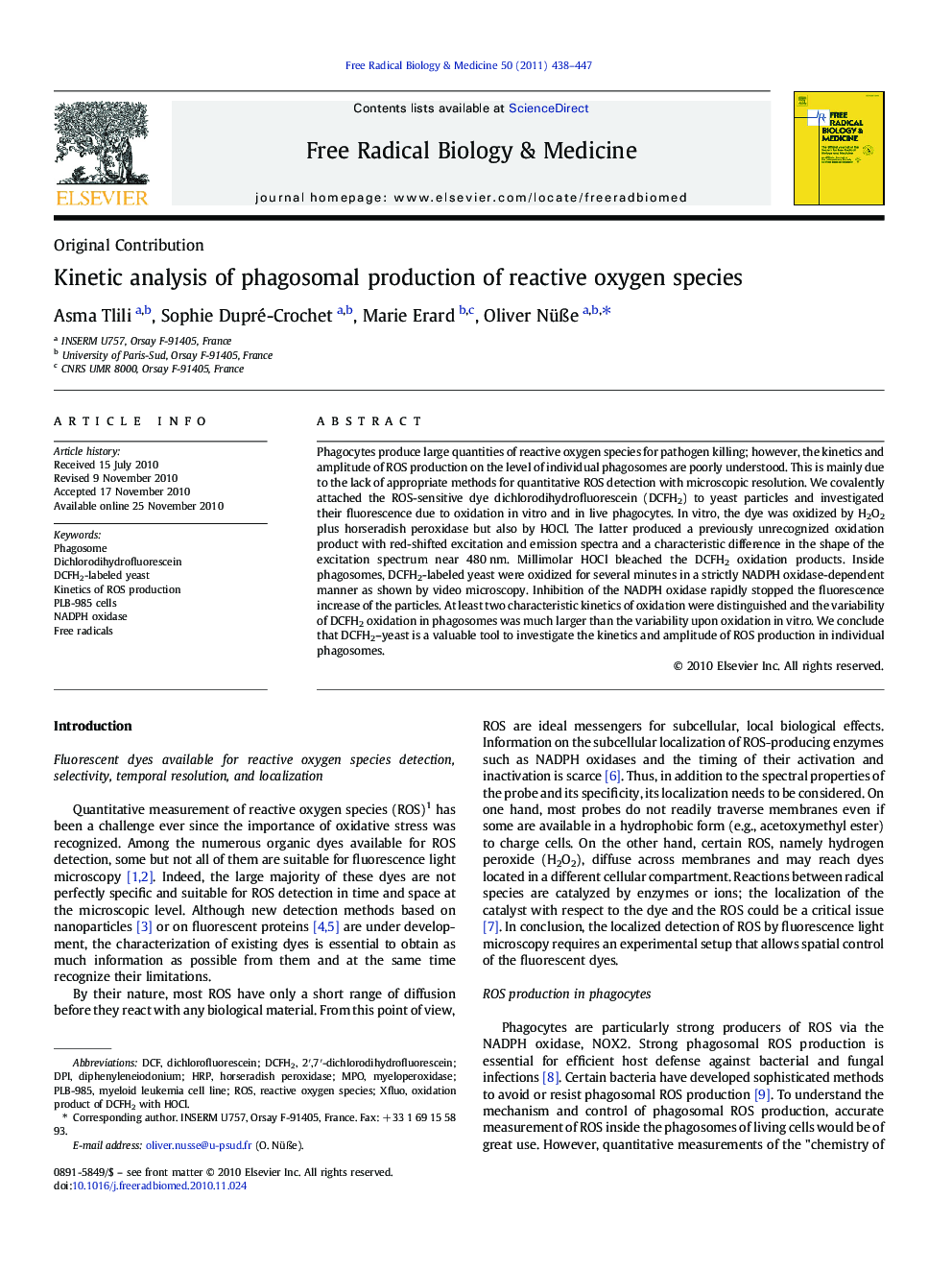| Article ID | Journal | Published Year | Pages | File Type |
|---|---|---|---|---|
| 10738697 | Free Radical Biology and Medicine | 2011 | 10 Pages |
Abstract
Phagocytes produce large quantities of reactive oxygen species for pathogen killing; however, the kinetics and amplitude of ROS production on the level of individual phagosomes are poorly understood. This is mainly due to the lack of appropriate methods for quantitative ROS detection with microscopic resolution. We covalently attached the ROS-sensitive dye dichlorodihydrofluorescein (DCFH2) to yeast particles and investigated their fluorescence due to oxidation in vitro and in live phagocytes. In vitro, the dye was oxidized by H2O2 plus horseradish peroxidase but also by HOCl. The latter produced a previously unrecognized oxidation product with red-shifted excitation and emission spectra and a characteristic difference in the shape of the excitation spectrum near 480Â nm. Millimolar HOCl bleached the DCFH2 oxidation products. Inside phagosomes, DCFH2-labeled yeast were oxidized for several minutes in a strictly NADPH oxidase-dependent manner as shown by video microscopy. Inhibition of the NADPH oxidase rapidly stopped the fluorescence increase of the particles. At least two characteristic kinetics of oxidation were distinguished and the variability of DCFH2 oxidation in phagosomes was much larger than the variability upon oxidation in vitro. We conclude that DCFH2-yeast is a valuable tool to investigate the kinetics and amplitude of ROS production in individual phagosomes.
Keywords
Related Topics
Life Sciences
Biochemistry, Genetics and Molecular Biology
Ageing
Authors
Asma Tlili, Sophie Dupré-Crochet, Marie Erard, Oliver NüÃe,
